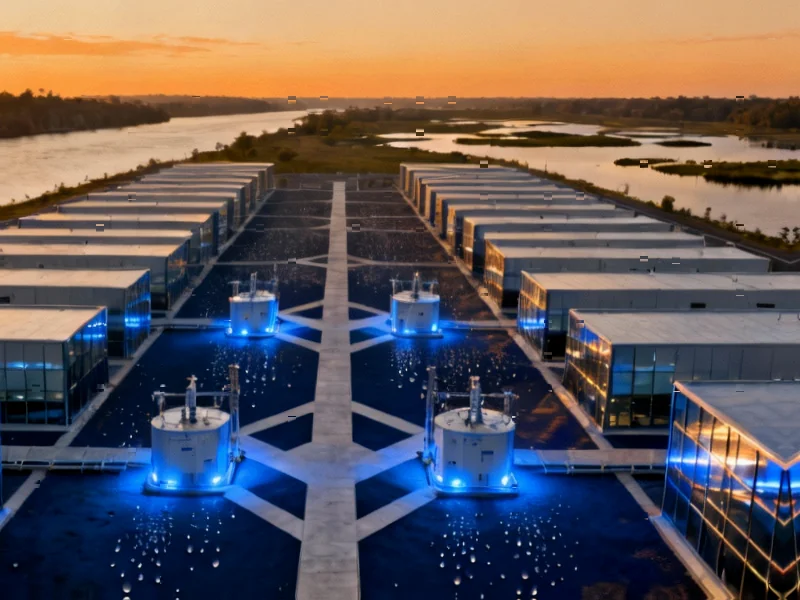According to Forbes, Meta Platforms stock has risen only 8% this year compared to Nasdaq’s 22% gain, following a disappointing third quarter earnings report that highlighted the company’s struggle to generate measurable revenue from its AI investments. Despite beating revenue expectations with $51.24 billion (26% growth) and exceeding EPS estimates by 56 cents, Meta’s stock fell 13% after October 30 due to increased capital expenditure forecasts of $71 billion. CEO Mark Zuckerberg’s pursuit of “superintelligence” has cost him over $25 billion in net worth, while Oppenheimer downgraded the stock citing “unknown revenue opportunity” similar to the company’s metaverse investments that lost $4.4 billion last quarter on just $470 million revenue. This investor skepticism comes as Meta plans to spend $600 billion on data centers through 2028, raising concerns about the company’s ability to monetize its massive AI bets.
The Innovation Execution Gap
Mark Zuckerberg’s track record reveals a pattern that should concern investors: he excels at execution and strategic acquisitions but struggles with organic innovation. The company’s most successful ventures—Instagram’s $1 billion acquisition now generating estimated $63 billion in 2025 revenue, Facebook’s News Feed, and targeted advertising—were either acquired or built upon existing concepts. When Zuckerberg ventures into truly novel territory like the metaverse, the results have been disastrous with Reality Labs burning billions quarterly. This pattern suggests that superintelligence represents another moonshot where Zuckerberg’s strengths in scaling existing businesses may not translate to creating breakthrough technologies from scratch. The fundamental problem isn’t ambition—it’s the mismatch between Zuckerberg’s acquisition-driven success and the requirements for genuine technological innovation.
The Coming AI Infrastructure Bubble
Meta’s $600 billion data center commitment through 2028, coupled with its $27 billion private-debt deal for the Hyperion data center, signals a dangerous trend in AI infrastructure investment. The private credit model—where firms like Blue Owl Capital finance construction and tech companies repay through leases—creates systemic risks reminiscent of subprime mortgages. These data center leases can be repackaged into tradeable securities, creating a financial instrument that could collapse if AI demand doesn’t materialize as projected. More critically, data centers face rapid obsolescence as NVIDIA and competitors release new chips annually, making today’s $600 billion infrastructure potentially worthless within years. The combination of financial engineering and technological obsolescence creates a perfect storm for investors who remember how similar structures contributed to the 2008 crisis.
The Superintelligence Reality Check
Zuckerberg’s vague responses to investor questions about revenue generation reveal the fundamental weakness in Meta’s AI strategy. Unlike OpenAI, which has demonstrated clear product-market fit with ChatGPT’s $20 billion annual revenue, Meta’s AI offerings feel like features rather than products. Meta AI assistant’s billion users benefit from forced integration with Facebook and Instagram rather than organic demand, while Vibes video generator and Vanguard smart glasses show limited commercial potential. The critical difference lies in OpenAI’s focused product development versus Meta’s scattergun approach to AI. More concerning is the diminishing returns in AI model improvements—each generation shows smaller performance gains while requiring exponentially more computing power. This suggests the superintelligence pursuit may be chasing diminishing returns at precisely the wrong moment in the technology curve.
The Cloud Service Gap
Meta’s most significant structural disadvantage in the AI race is its lack of a cloud computing business. While Amazon, Google, and Microsoft can monetize AI infrastructure through their cloud divisions—AWS growing 20%, Google Cloud boosted by AI demand, Azure rising 40%—Meta has no equivalent revenue stream. This forces the company to treat AI spending purely as cost rather than potential profit center. The $380 billion collective AI capex forecast among tech giants becomes fundamentally different for Meta: competitors can recoup investments through cloud services even if specific AI applications fail, while Meta’s entire bet rests on creating successful AI products. This asymmetric risk profile explains why investors punished Meta’s increased spending while rewarding similar moves by cloud-equipped competitors.
The Wall Street Delusion
The 42 Wall Street analysts maintaining an average $847 price target for Meta represent a dangerous disconnect from operational reality. Their optimism appears rooted in historical performance rather than current fundamentals, ignoring that Zuckerberg’s acquisition-driven success formula doesn’t apply to the superintelligence challenge. The metaverse precedent should serve as a warning: despite similar rhetoric about “future computing” and massive spending, Reality Labs continues hemorrhaging money with no path to profitability. Analyst confidence seems based on Zuckerberg’s past execution abilities rather than the specific challenges of creating general artificial intelligence—a problem that has eluded the world’s best researchers for decades. This collective optimism creates unrealistic expectations that could trigger severe corrections when superintelligence fails to materialize on Zuckerberg’s ambitious timeline.




